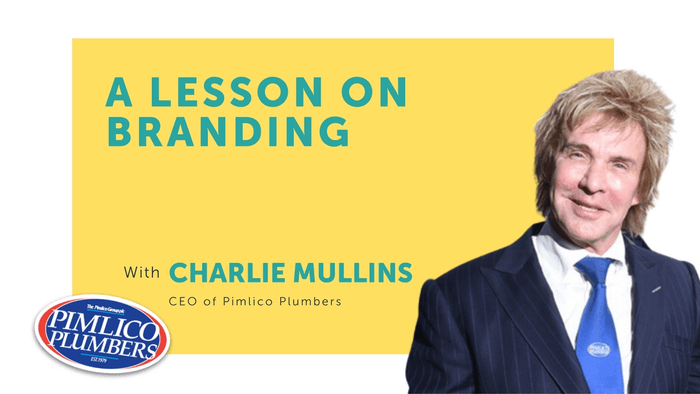Marketing
Looking back: The top marketing challenges of 2023
The time has come to bid farewell to another year – and quite the year it was!
From the emergence of ChatGPT and all things generative AI, to ‘Barbenheimer’ and what may be considered one of the biggest, most successful movie promotion campaigns to ever exist –2023 has paved the way for a whole new future of marketing.
However, that’s not to say this year was without its obstacles. Navigating new technologies, shifting customer demands and ever-evolving trends is never easy.
To bring the year to a close, we’re looking back at some of the top recurring challenges we’ve seen in the marketing landscape, where businesses are sometimes falling short, and how they can come out on top with the right approach.
So, without further ado, let’s dive in…
1. Understanding your audience
At the end of the day, your marketing isn’t built for you. Sure, your efforts are designed to drive results for your business. But it’s not you that consumes the content. It’s not you that it has to engage. It’s your audience.
Which is why taking the time to understand your target market is critical. Far too often, businesses fail to do the necessary groundwork before diving into their campaigns. You need to know your customers’ pain points, what keeps them up at night, what their goals and ambitions are.
The best marketing leads with empathy – and you can’t do that without knowing the ins and outs of your target audience. Lay your foundations with the right data and insights, and your content is far more likely to hit the mark.
2. Building a strong digital strategy
Your content will only be as effective as the strategy that sits beneath it. Think of your strategy as the cement to your wider marketing – without it, the rest of your efforts will crumble.
So what does a strong strategy look like? It’s one that is agile, adaptable, and guided by data. You need a strong database to track performance, and be ready to pivot as necessary when a certain tactic falls short, or something performs better than you might have expected.
Every marketing decision should be guided by insights – both externally, and those from within your own teams. Your sales team are in the trenches every day. No one knows your customers, their pain points, and the conversations they’re having better than your salespeople. Be sure to leverage that insight, and be flexible enough to alter your strategy based on that feedback.
Which bring us to our next challenge…
3. Ensuring flexibility
Your marketing strategy should be ready to adapt at any given moment. The marketing landscape is never stagnant – and as such, your strategy shouldn’t be either.
Too often, businesses are afraid to pivot because they don’t want to shift their entire strategy. However, in a market that is constantly evolving, failing to evolve with it might just be your downfall. Whether it’s the latest piece of tech that everyone is buzzing about, or a social media trend that’s gone viral – keeping your ear to the ground and being reactive with your marketing is the best way to ensure it stays topical, relevant and engaging.
4. Telling a story
B2B shouldn’t be boring. At the end of the day, it’s still people that you are targeting. They still have fears, hopes, struggles, ambitions. It’s your job to engage these individuals without them feeling like they’re being sold to.
The competition across almost every industry is ever-growing. The market is over-crowded, and your target audience is being bombarded with marketing material from the vast majority of your competitors. It’s up to you to cut through the noise and stand out.
How? With something that resonates. Something fun, engaging and focused less on making a sale, and more on capturing their interest. The buyer’s journey is rarely a straight A to B path, but if you land with enough impact, it will be your brand name they remember and come back to.
By telling a story that places your customers at the centre, you can build your reputation, pique their interest, and stand out from the crowd. Focus on sharing content that’s of value and can help your customers – this will position your brand as a thought leader within your industry and help build relationships based on trust.
5. Knowing what success looks like
This is arguably one of the most prominent challenges businesses face when setting up their marketing function. It’s an exciting journey, but often the excitement gets in the way of laying the right foundations.
Before you get stuck into the granular details, you need total alignment on what success looks like. Do you have KPIs? Have you agreed on success metrics? Do you know what you want to achieve through your campaign?
Without these initial discussions, you risk building a campaign with no real end goal, and no way of assessing performance or measuring success. What success looks like to your business won’t be the same as it looks for another – so it’s important to know exactly what you hope to achieve. Maybe it’s increased reputation, or improved conversion rate, or even just building brand awareness.
Whatever it is, having those discussions at the outset helps to bolster your efforts and ensure everything is aligned to one holistic end goal.
Looking forward: Boosting growth in 2024
As we wave goodbye to another year of success, challenges and learnings, it’s time to look forward to how we can prepare for the New Year.
Consider this part one of a two-part guide to a successful 2024. Be sure to keep an eye out for our next blog, where we’ll explore how you can apply learnings from 2023 to your marketing strategy for the year ahead.
If you’re looking to transform your marketing efforts this year, get in touch with our team – we’d be happy to discuss how we can support you on your marketing journey.
Reach our CEO at jenny.knighting@nutcrackeragency.com, or call 0203 941 0305.
Share this:






